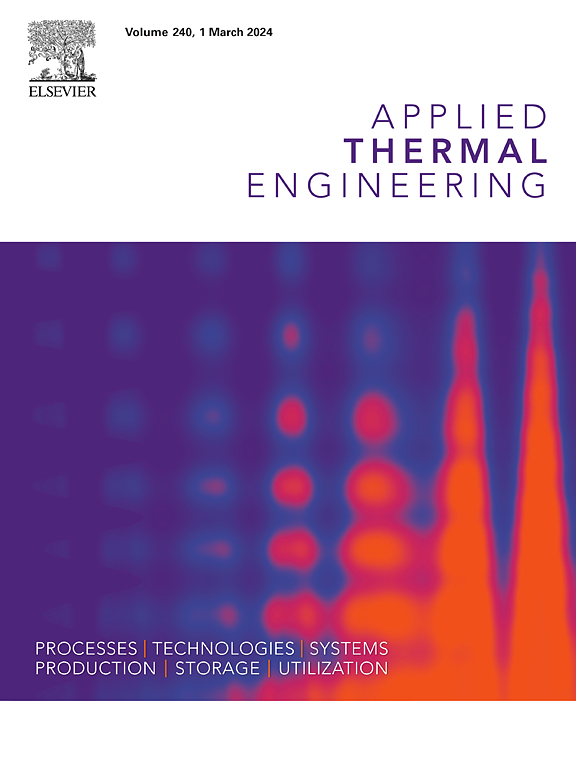开发高效散热齿轮传动机匣的拟瞬态建模
IF 6.9
2区 工程技术
Q2 ENERGY & FUELS
引用次数: 0
摘要
在没有主动冷却的情况下,机壳有限的散热性能限制了齿轮传动系统功率密度的增长。同时,壳体复杂的多相热流对其性能评价和散热改进提出了挑战。为了解决这一瓶颈问题,提出了伪瞬态热流耦合模型和套管内三角形间隔肋(tsr),分别预测多相热流性能和以较小的流动摩擦损失(粘性热)增强换热。该模型通过热网模型辅助CFD模型实现了多相热流的瞬态行为预测和稳态性能评价。结果表明:在所有工况下,TSRs均能显著提高Nusselt系数(Nu),降低皮肤摩擦系数(Cf)。tsr的高Nu得益于流动分离和轴承涡,它们增加了近壁温度梯度。此外,tsr之间的轴承涡和较厚的润滑层通过减少动量交换来降低Cf。考虑到这些因素,构建了基于逆熵权分配策略的全工况优化框架,寻找各工况下Nu较高、Cf较低的配置参数。与未加TSRs相比,优化后的TSRs在所有工况下均可使Nu提高28 - 42%,Cf降低32 - 48%。本文章由计算机程序翻译,如有差异,请以英文原文为准。

A pseudo-transient modeling for developing gear transmission casing with efficient heat dissipation
The limited heat dissipation performance of the casing restricts the power density growth in gear transmission system without active cooling. Meanwhile, the complex multiphase heat-flow of the casing presents a challenge to the performance evaluation and heat dissipation improvement. To address this bottleneck, pseudo-transient heat-flow coupled modeling and triangular spacer ribs (TSRs) within the casing are proposed to predict multiphase heat-flow performance and enhance heat transfer with less flow friction losses (viscous heat), respectively. The model realizes both transient behavior prediction and steady-state performance evaluation of multiphase heat-flow by the thermal network model assisted CFD model. The results show that TSRs significantly enhance Nusselt coefficient (Nu) and reduce skin friction coefficient (Cf) under all operating conditions. The higher Nu of TSRs benefits from the flow separation and bearing vortices, which increase the near-wall temperature gradient. In addition, the bearing vortices and thicker lubricant layer between TSRs reduce Cf by diminishing momentum exchange. Considering these factors, a full-condition optimization framework based on the reverse entropy weight assignment strategy is constructed to find the configuration parameters with the higher Nu and lower Cf for all operating conditions. Compared without TSRs, the optimized TSRs enhances Nu by 28–42 % under all operating conditions, while reducing Cf by 32–48 %.
求助全文
通过发布文献求助,成功后即可免费获取论文全文。
去求助
来源期刊

Applied Thermal Engineering
工程技术-工程:机械
CiteScore
11.30
自引率
15.60%
发文量
1474
审稿时长
57 days
期刊介绍:
Applied Thermal Engineering disseminates novel research related to the design, development and demonstration of components, devices, equipment, technologies and systems involving thermal processes for the production, storage, utilization and conservation of energy, with a focus on engineering application.
The journal publishes high-quality and high-impact Original Research Articles, Review Articles, Short Communications and Letters to the Editor on cutting-edge innovations in research, and recent advances or issues of interest to the thermal engineering community.
 求助内容:
求助内容: 应助结果提醒方式:
应助结果提醒方式:


